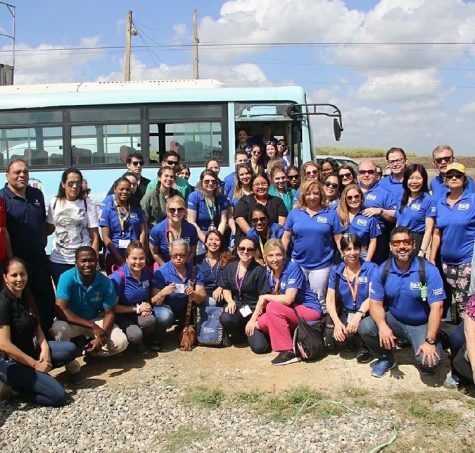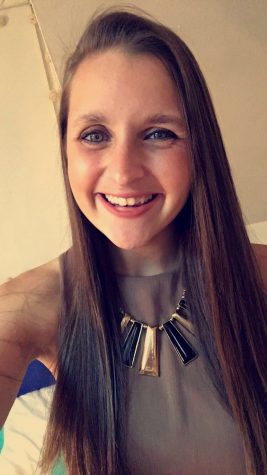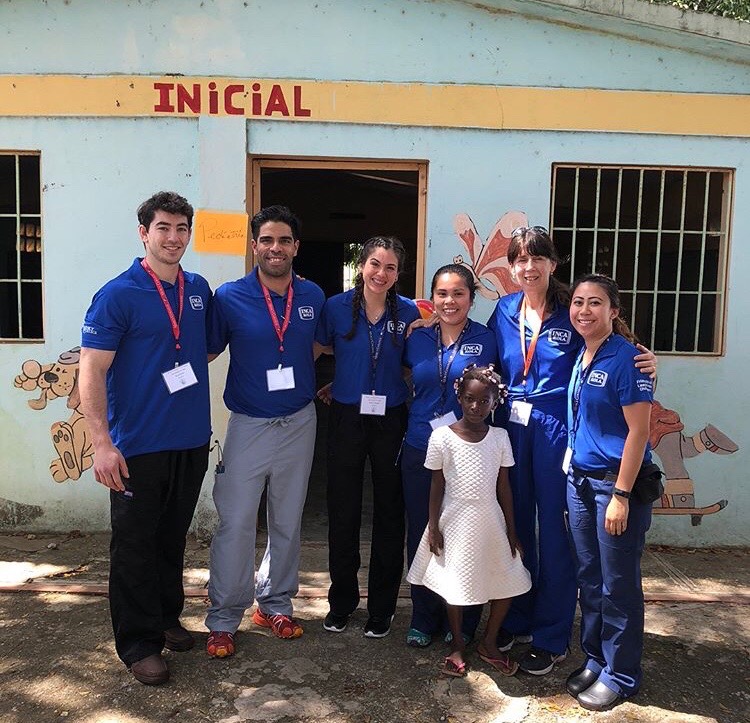Mercy College’s Medical Mission Heads To Haina

In 2007, Haina, Dominican Republic was listed as the third worst polluted place in the world. Every day, the children of Haina are forced to live and play in the toxic lead dust. The harm to the children of this exposure to high levels of lead in their environment is major lifetime learning disabilities, permanent neurological damage, behavior problems, and never hope to achieve their full learning potentials.
Mercy College sent 25 students and four faculty members from the Physician Assistant, Communication Disorders, and Physical Therapy Programs to partner up with Inca Kola and Friends of Lead-Free Children.
The team of students that went on this medical mission are just a few of the students from each major. The students had to write an essay and get approved by a panel of professors to determine who went. The professors encourage students to apply each time because the experience is like no other.
The Mercy College health professional team screened children for some of the issues related to exposure to high levels of lead in their environments such as learning disabilities, neurological issues, and behavior problems.
Physical therapy students performed gross motor screenings, communication disorder students performed hearing and speech screenings, and physician assistant students paired with physicians from Aetna and Affinity healthcare to perform primary care health screenings.
The days were packed with helping as many people as possible. They treated patients from 10 a.m. to 4 p.m. and then were fed dinner by the locals in the area. The medical mission was five days long and two of those days were spent traveling.
“Not only did the local community come for help but the local community also helped us out by feeding us. It’s the beauty of being human- everyone willing and able to help one another,” said Mallorie Hopkins, a Mercy College Physical Therapy student.
Many of the students learned that a language barrier is not as hard as one may think, noticed Physical Therapy student Mary Jongoy while on her way back to the United States.
“After a communication disorder student, Paige DiStefano, asked me if I knew the difference between speech and language, I told her that after this week I think that speech is talking whereas language involves communication. This communication can be verbal, nonverbal, or visual. I realized that I learned all of this because I was putting it into practice all week. I speak very little Spanish, so anytime I had to communicate with my patient I had to use hand gestures, pictures, and words.”
The team of students treated everyone that came in, such as men, woman, children, and babies. A lot of the people they saw presented themselves with lower back pain, leg pain, and gait deviations.
“It was one of the most meaningful experiences of my life,” said Brett Hoppel, Mercy College student.
The medical missions are impactful for not only the people from the Dominican Republic but for the students going on the mission as well.
“Nothing could compare to the feeling you get after helping someone in need, this experience is so unique and invaluable, something you can really only benefit from,” said Mercy College Student Joy Marie Mantilla.
Many of the children presented with ailments that could be easily and affordably attended to in the United States. However, due to the poverty, some of these families who were facing these conditions were quickly becoming life-threatening.
Hopkins said her favorite part was being able to make an impact on so many people’s lives. ‘Being in school for three years and not seeing so many patients to seeing so many all at once was such an amazing feeling. All that hard work, all those late nights, every exam I have ever studied for has finally paid off because I am helping to improve the quality of life that people live.”
The team provided services to over 1,500 individuals during their short stay. They primarily saw women and children who have no health services. At first, it was really difficult to accept that they wouldn’t be able to help everyone. However, after working with patients, they realized that we were able to do so much with the little time that they had.

Dani Sarasky is a Media Studies major with a concentration in Television and Radio production. She is from a very small town on Long Island called Floral...








